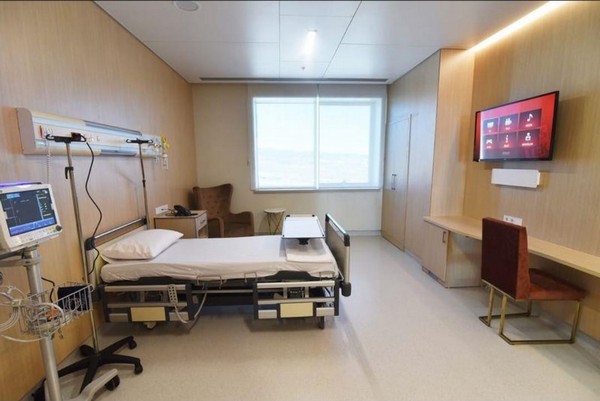VACUUM ASPIRATION FOR ABORTION
Surgery Overview
There are two methods of vacuum aspiration (also called suction aspiration):
Manual vacuum. This procedure can be used around 5 to 10 weeks after the last menstrual period (early first trimester). It involves the use of a specially designed syringe to apply suction. This method is not available everywhere. But it may be more available than machine aspiration in some geographic areas.Machine vacuum. This procedure is a common method used in the first 5 to 10 weeks (first trimester) of pregnancy. Machine vacuum aspiration involves the use of a thin tube (cannula) that is attached by tubing to a bottle and a pump, which provides a gentle vacuum. The cannula is passed into the uterus, the pump is turned on, and the tissue is gently removed from the uterus.Vacuum aspiration procedure
Our hospital is located in europian side of Istanbul. 15 minutes driving distance from the airport. All processes are practised by gynecologist and accompanied by anesthetics experts.
Hours before or the day before a vacuum aspiration procedure, a cervical (osmotic) dilator may be placed in the cervix to slowly open (dilate) it. Just before, antibiotics are given to prevent infection. A medicine called misoprostol may be given to soften the cervix before the procedure.
Vacuum aspiration usually takes between 10 and 15 minutes. It can be done safely in a clinic or medical office under local anesthetic. For this procedure, the health professional will:
Position you on the examination table in the same position used for a pelvic examination, with your feet on stirrups while lying on your back.Insert a speculum into the vagina.Clean the vagina and cervix with an antiseptic solution.Inject a numbing medicine (local anesthetic) in the cervix. Medicine for pain or sedation, in addition to the local anesthetic, may be given by mouth or through a vein (intravenously). Vasopressin, or a similar medicine that slows uterine bleeding, may be mixed with the local anesthetic to reduce blood loss.Grasp the cervix with an instrument to hold the uterus in place.Open (dilate) the cervical canal with a small instrument. Dilation reduces the risk of any injury to the cervix during the procedure.Pass a thin tube (cannula) into the cervical canal, and apply suction to gently remove all tissue from the uterus. As the uterine tissue is removed, the uterus will contract. Most women feel cramping during the procedure. The cramps will decrease after the tube is removed. Some women also may have nausea or sweating or feel faint.
The tissue removed from the uterus during a vacuum aspiration procedure is examined to make sure that all of the tissue has been removed and the abortion is complete.
Sometimes a dilation and curettage (D&C) procedure is needed after a vacuum aspiration if all of the tissue has not been removed. D&C uses a sharp surgical instrument to clear tissue from the uterus.
What To Expect After Surgery
Vacuum aspiration is a minor surgical procedure. A normal recovery includes:
Irregular bleeding or spotting for the first 2 weeks. During the first week, avoid tampons and use only pads.Cramps similar to menstrual cramps. These may be present for several hours and possibly for a few days, as the uterus shrinks back to its non-pregnant size.Emotional reactions for 2 to 3 weeks. After an abortion, it is normal to feel relief, sadness, grief, or guilt. Hormonal changes during pregnancy can make emotions stronger than usual.
After the procedure:
Take your full course of prescribed antibiotics to prevent infection.Rest quietly for the day. You can do normal activities the following day, based on how you feel.Acetaminophen (such as Tylenol) or ibuprofen (such as Advil) can help relieve cramping pain. Be safe with medicines. Read and follow all instructions on the label.Do not have sexual intercourse for at least 1 week. Use birth control following the abortion. And use condoms to prevent infection. You can start certain birth control methods right after the procedure.Signs of complications
Call your doctor immediately if you have any of these symptoms after an abortion:
Severe bleeding. Both medical and surgical abortions usually cause bleeding that is different from a normal menstrual period. Severe bleeding can mean:Passing clots that are bigger than a golf ball, lasting 2 or more hours.Soaking more than 2 large pads in an hour, for 2 hours in a row.Bleeding heavily for 12 hours in a row.Signs of infection in your whole body, such as headache, muscle aches, dizziness, or a general feeling of illness. Severe infection is possible without fever.Severe pain in the abdomen that is not relieved by pain medicine, rest, or heatHot flushes or a fever of 38°C (100.4°F) or higher that lasts longer than 4 hoursVomiting lasting more than 4 to 6 hoursSudden abdominal swelling or rapid heart rateVaginal discharge that has increased in amount or smells badPain, swelling, or redness in the genital area
Call your doctor for an appointment if you have had any of these symptoms after a recent abortion:
Bleeding (not spotting) for longer than 2 weeksNew, unexplained symptoms that may be caused by medicines used in your treatmentNo menstrual period within 6 weeks after the procedureSigns and symptoms of depression. Hormonal changes after a pregnancy can cause depression that requires treatment.
Why It Is Done
Vacuum aspiration is done in the first trimester of pregnancy.
Vacuum aspiration can be done for:
An induced therapeutic abortion.A failed medical abortion.Death of the fetus (missed spontaneous abortion).An incomplete miscarriage (incomplete spontaneous abortion).
How Well It Works
First-trimester surgical abortions are safe and effective and have few complications.
In rare cases, an aspiration procedure doesn’t successfully end a pregnancy. This is more likely to happen during the earliest weeks of a pregnancy.
Risks
The risk of complications is low. Some minor complications include:
Injury to the uterine lining or cervix.Infection. Bacteria can enter the uterus during the procedure and cause an infection. This is more likely if an untreated infection, such as a sexually transmitted infection (STI), is present before the procedure. Symptoms of fever, pain, and abdominal (belly) tenderness will usually start within 3 days of the procedure. Antibiotics given during or after the procedure reduce the risk of infection.
Rare complications include:
If you would like to get an information or make an appoitment please call us mobile: Or you can click below and send your messages by using whatsapp. All inquiries please contact us.
Turkey’s gold face that elected the best doctor of 2019. Dr.Noah GÜMÜŞTEKİN face of golden turkey award was bestowed to autistic children.Dr. Noah GÜMÜŞTEKİN was chozen the best genital aesthetic doctor in Turkey.



